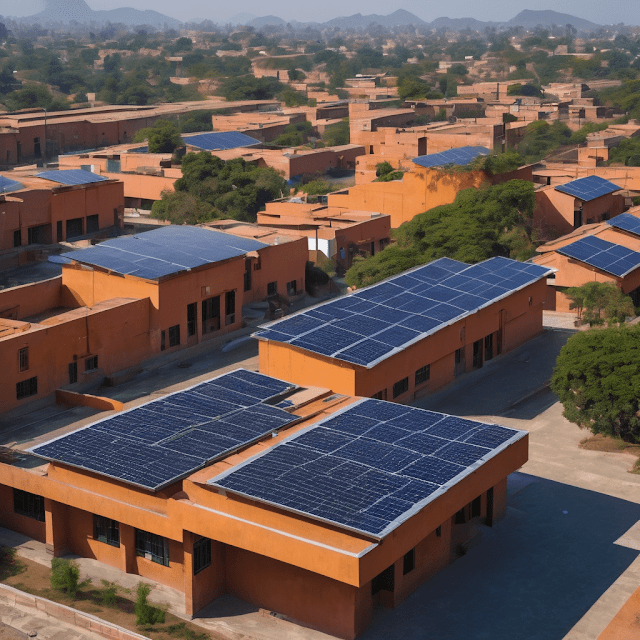How to Save Electrical Energy at School?
Saving electrical energy at school is not just a responsible practice; it's an investment in a sustainable future. In this comprehensive guide, we'll explore actionable steps and innovative ideas to reduce energy consumption in educational institutions. From practical classroom solutions to large-scale initiatives, discover how schools can contribute to a greener planet while enjoying substantial cost savings.
How to Save Electrical Energy at School?
1. Embracing Natural Light
Harnessing the power of natural light not only creates a vibrant learning environment but also significantly reduces the need for artificial lighting. Explore the installation of skylights and large windows to illuminate classrooms and common areas efficiently.
2. Efficient Lighting Systems
Upgrade to energy-efficient LED lighting. These bulbs last longer, consume less energy, and provide superior illumination. Consider motion-sensor lights in less frequented areas to ensure lights are only on when needed.
3. Smart Classroom Appliances
Invest in energy-efficient appliances for classrooms, such as smart projectors and computers that automatically power down when not in use. Implementing smart technology ensures energy is used only when necessary.
How to Save Electrical Energy at School? through HVAC Optimization!
Heating, ventilation, and air conditioning (HVAC) systems are major energy consumers. Regular maintenance, proper insulation, and investing in programmable thermostats can lead to substantial energy savings.
1. Student Involvement Programs
Educate students about the importance of energy conservation. Establish student-led initiatives, such as "Energy Patrols," where students monitor and report areas where energy is being wasted.
2. Sustainable Landscaping
Planting trees strategically around the school can provide shade, reducing the need for air conditioning. Additionally, a well-maintained green space contributes to a positive learning environment.
3. Efficient Water Usage
Educate students and staff about responsible water usage. Implement water-saving faucets and encourage fixing leaks promptly. Water efficiency is intertwined with electrical efficiency.
4. Sources of Renewable Energy
Examine if adding wind turbines and solar panels to the school's infrastructure would be a feasible use of renewable energy. These programs not only help save energy but also function as teaching resources for pupils.
5. Transportation That Uses Less Energy
Encourage staff and students to use environmentally friendly modes of transportation, such carpooling or biking. This helps save electricity while also lessening the school's carbon footprint.
6. Classroom Energy Challenges
Initiate friendly competitions among classrooms to encourage energy-saving practices. Offer rewards for the most innovative and impactful energy-saving ideas.
7. Green Building Design
Consider sustainable architecture when constructing new school buildings or renovating existing ones. Energy-efficient designs can significantly reduce long-term energy costs.
8. Establishing an Energy Conservation Committee
Form a committee comprising teachers, students, and administrative staff dedicated to identifying and implementing energy-saving measures.
9. Regular Energy Audits
Conduct regular energy audits to identify areas for improvement. This proactive approach ensures that the school stays on track with its energy-saving goals.
10. Incentivize Energy-Saving Ideas
Create a reward system for students and staff who contribute innovative energy-saving ideas. Recognition and incentives foster a culture of sustainability.
11. Collaboration with Local Utilities
Explore partnerships with local utility companies for energy-saving programs or discounts on energy-efficient equipment.
12. Sustainable Procurement Practices
When buying new materials and equipment for the school, choose goods that are energy-efficient and environmentally friendly.
13. Incorporating Energy Education in the Curriculum
Integrate energy-saving concepts into the curriculum to raise awareness and empower students to make informed choices.
14. Power Down Policies
Implement strict policies regarding turning off lights, computers, and other electronic devices when not in use. Consistent adherence to these policies can lead to significant energy savings.
15. Community Outreach Programs
Extend energy-saving practices beyond the school walls by engaging with the local community. Share insights and collaborate on wider sustainability initiatives.
16. Remote Learning Opportunities
Explore digital learning platforms and remote learning options to reduce the need for physical facilities and, consequently, energy consumption.
17. Monitoring and Benchmarking
Regularly monitor and benchmark energy consumption to track progress and identify areas for further improvement.
FAQs Related to "How to Save Electrical Energy at School?"
How can students actively participate in saving electrical energy at school?
Engage students through initiatives like "Energy Patrols" and classroom challenges. Encourage them to adopt energy-saving habits both at school and home.
Are solar panels a viable option for schools?
Yes, solar panels are a sustainable and cost-effective solution for schools. They not only reduce energy costs but also serve as educational tools.
How can schools incentivize energy-saving ideas?
Create a rewards system for innovative ideas, recognizing students and staff for their contributions to energy conservation.
What role does landscaping play in energy conservation at schools?
Strategic landscaping provides shade, reducing the need for air conditioning. It contributes to a greener and more energy-efficient school environment.
How often should schools conduct energy audits?
Regular energy audits, at least annually, help schools identify areas for improvement and track progress in their energy-saving initiatives.
How can schools collaborate with local utilities for energy-saving programs?
Explore partnerships with local utility companies to access energy-saving programs and discounts on energy-efficient equipment.
Conclusion:
At schools, conserving electricity is more than just a financial decision—it's a statement of environmental sustainability. Schools can help create a greener world and teach the next generation the value of responsible energy use by putting these suggestions into practice. Set off on the path to a school that uses less energy and is more environmentally friendly right now!





Post a Comment